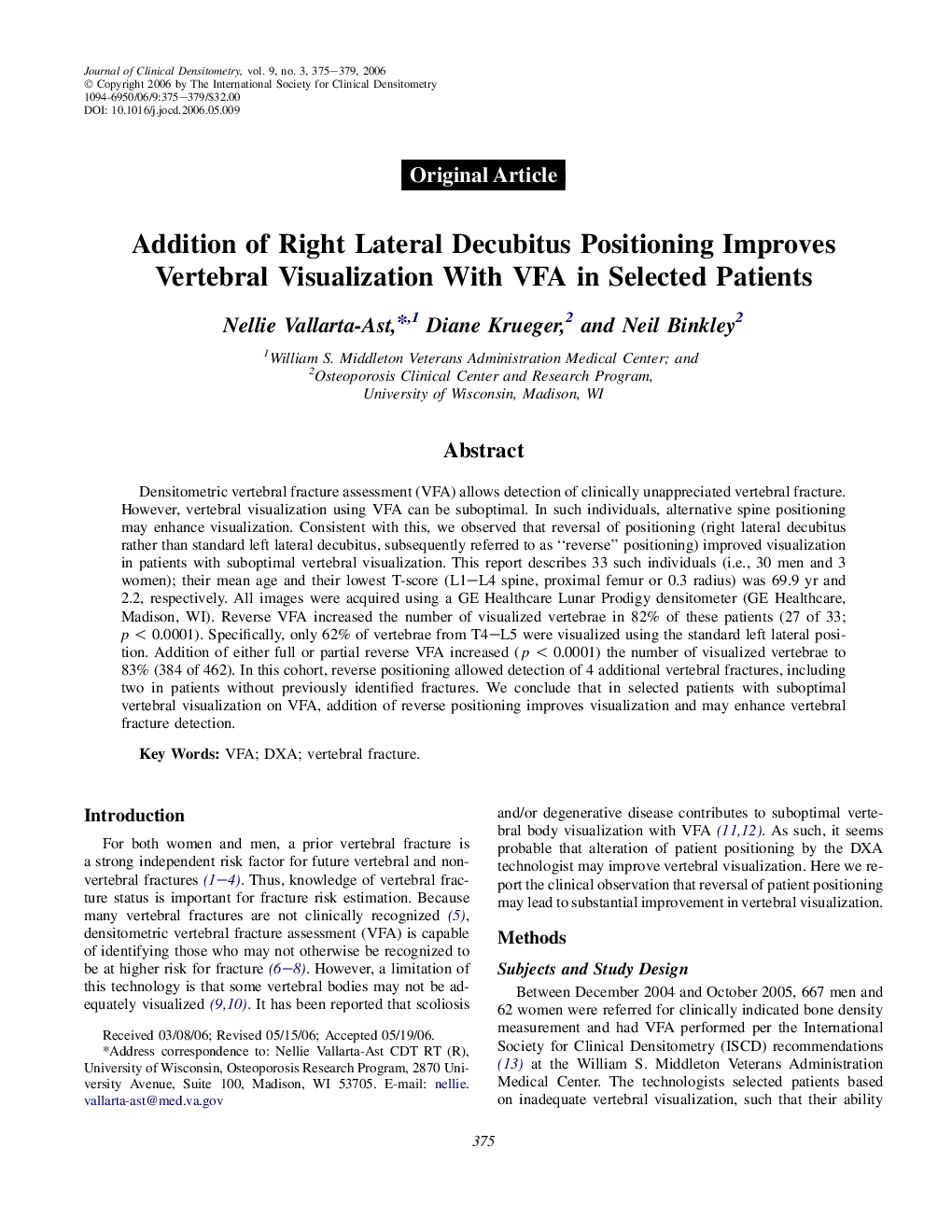| Article ID | Journal | Published Year | Pages | File Type |
|---|---|---|---|---|
| 3271839 | Journal of Clinical Densitometry | 2006 | 5 Pages |
Abstract
Densitometric vertebral fracture assessment (VFA) allows detection of clinically unappreciated vertebral fracture. However, vertebral visualization using VFA can be suboptimal. In such individuals, alternative spine positioning may enhance visualization. Consistent with this, we observed that reversal of positioning (right lateral decubitus rather than standard left lateral decubitus, subsequently referred to as “reverse” positioning) improved visualization in patients with suboptimal vertebral visualization. This report describes 33 such individuals (i.e., 30 men and 3 women); their mean age and their lowest T-score (L1-L4 spine, proximal femur or 0.3 radius) was 69.9 yr and 2.2, respectively. All images were acquired using a GE Healthcare Lunar Prodigy densitometer (GE Healthcare, Madison, WI). Reverse VFA increased the number of visualized vertebrae in 82% of these patients (27 of 33; p < 0.0001). Specifically, only 62% of vertebrae from T4-L5 were visualized using the standard left lateral position. Addition of either full or partial reverse VFA increased (p < 0.0001) the number of visualized vertebrae to 83% (384 of 462). In this cohort, reverse positioning allowed detection of 4 additional vertebral fractures, including two in patients without previously identified fractures. We conclude that in selected patients with suboptimal vertebral visualization on VFA, addition of reverse positioning improves visualization and may enhance vertebral fracture detection.
Keywords
Related Topics
Health Sciences
Medicine and Dentistry
Endocrinology, Diabetes and Metabolism
Authors
Nellie Vallarta-Ast, Diane Krueger, Neil Binkley,
